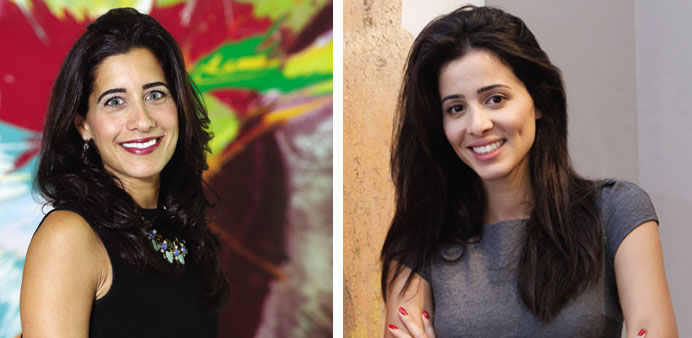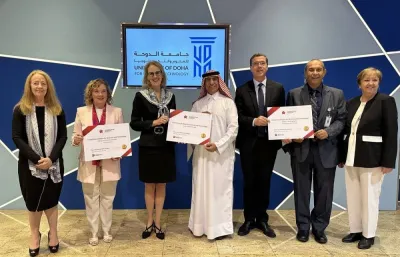By Denise Marray/Gulf Times Correspondent/London
The attention of the art world will be on Doha this October when Sotheby’s auctions a collection that represents the crème de la crème of Contemporary Art. On sale will be an eclectic mix of artworks from leading regional and international artists.
Robin Woodhead, chairman, Sotheby’s International, gave his perspective on the upcoming sale: “Following our record-breaking auction in Doha last year, Qatar remains extremely important to Sotheby’s. Underlying our efforts in the wider Mena region is a very strong focus on the hugely exciting arts scene in Qatar, and with each sale we are building on the momentum and success of previous ones in order to appeal to a wider audience there. We anticipate a very positive response locally to the superb group of works sourced for our sale on13th October. Compared to last year’s, our forthcoming auction offers a larger selection of works with a broader scope of both emerging artists and works of the highest calibre by established artists.”
For the Sotheby’s team the auction is the culmination of a process often accompanied with banner headlines announcing multi-million dollar sales. This was certainly the case with last year’s Doha auction which achieved the record- breaking total of $15,199,750 for a sale of Contemporary Art in the Middle East region.
However, that kind of success doesn’t happen overnight as Gulf Times discovered when speaking to the co-heads and organisers of the forthcoming sale. Colleagues Aileen Agopian and Lina Lazaar, share responsibility for ensuring that the auction meets the expectations of Sotheby’s exacting clientele. They have to equal or better the impressive results they achieved last year in Doha’s April sale. The sale must be of sufficient quality to attract art connoisseurs from across the globe — people who are prepared to spend money but only if what is on offer is exceptional.
Lazaar explained: “Each time we are looking to create a museum quality exhibition in Qatar. Sometimes the process of putting the exhibition together can be even more exciting than the auction itself; you need to pick about 45-50 artworks and we try to bring the best of what is available regionally and internationally.”
Agopian gave an insight into the range of factors that are taken into account when putting a price on an artwork. These include looking at an artist’s track record at auction but also carefully monitoring activity at art fairs and galleries. “We are talking constantly to collectors to understand what they are buying —what they want, what the price ranges are, who is selling out, or which artist has a ‘wait list’,” she explained.
She added: “Sometimes we challenge the market and put forward an artist that hasn’t been presented before; for example, we track down Middle Eastern artists who have piqued the curiosity of collectors and international curators. The whole mindset behind our strategy is to put together a group of artists that will not only speak to the art lovers and collectors but challenge them and expose them to new forms of art that they may not be aware of.”
Agopian was impressed by the huge turnout last year for the Doha exhibition which accompanied the sale. This, she said, reflected the appetite within Qatar for viewing art works at first hand. This level of interest she said had been nurtured by the rich cultural scene in Doha with its many first rate museums and exhibitions. “The art initiatives, shows and museums have obviously made an impact,” she observed.
Lazaar noted the impressive contribution of HE Sheikha al-Mayassa to Doha’s vibrant art scene. “I think that the elegance and seriousness with which she has managed to embrace regional and local culture — enhance and highlight it and complement it with the global international discourse has been magnificent. She has not only brought in the best of the international contemporary art scene but she has also brought to Doha major Arab artists,” she said.
Lazaar attended the opening of Doha’s Damien Hirst exhibition: “If you look at the quality of the presentation, the selection and the curatorial narrative that was created in Doha with respect to Damien Hirst, what was done was phenomenal,” she commented.
When Lazaar is in Doha she makes a point of doing what she calls ‘The Art Trek’. “Qatar is a city where you can take a light handbag and literally go from Katara Village to the Islamic Museum to Mathaf and Alriwaq all on foot which is lovely. Also, the Corniche is so beautiful and you can do this ‘art trek’ in your own time with no pressure or worries about over-crowding or access,” she reflected.
Speaking of her own early fascination with art, Lazaar said: “The initial impulse for me was one of curiosity about cultures as a whole. That translated into a love of aesthetics and visual language more specifically.”
As part of the carefully planned build up to the Doha sale in October exhibitions of the collection, the backbone of which is now in place, will be held in New York and London. These exhibitions create a ‘buzz’ around the artworks and are an important element in pre-sale activity.
Agopian and Lazaar are now at the stage where they are fine-tuning the collection. As Lazaar put it: “We are brainstorming with the team about artists we could add: we have the cake and we are looking for the cherries to put on the top. But we are talking about just another five to seven additions at this stage.”



